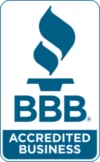Johnson & Johnson, owners of Aveeno, Clean and Clear, Neutrogena, and Johnson’s product lines, offer a wide selection of skincare products for a variety of consumers. Generations of mothers have trusted Johnson’s baby powder to be safe to use for babies and young children. Johnson & Johnson markets their product as a safe way to prevent diaper rash, as reflected by the product’s slogan, “Pure and gentle enough for babies’ bottoms. A product mothers can trust. Made by a company that puts customers first.” However, this sentiment has not been reflected in the numerous lawsuits that have been filed against the company over the past 20 years.
In 1999, Darlene Coker, a mother of two, was diagnosed with mesothelioma, a deadly lung cancer that is associated with exposure of asbestos fibers. The number one cause of mesothelioma is exposure to asbestos at the workplace. Professions that have an elevated risk of coming into contact with asbestos include firefighters, shipyard workers, powerplant workers, industrial workers, and construction workers. However, Darlene never had performed work where she was likely to come into repeated contact with asbestos, so she wondered how she had come to develop mesothelioma. The answer, she found, was in the Johnson & Johnson’s baby powder she had used on both herself and her daughters for years. She filed a lawsuit and her lawyers requested both records from Johnson & Johnson regarding the presence of asbestos in its talc supplies. Talc, one of the main ingredients in Johnson & Johnson’s baby powder, and asbestos commonly occur together in nature, so Johnson & Johnson would likely have records indicating whether or not their talc supply contained asbestos. However, Johnson & Johnson withheld their data on the matter, and Darlene was forced to drop her lawsuit before she passed away at the age of 63.
Though Darlene was unsuccessful in her lawsuit, nearly 12,000 cancer patients have sued Johnson & Johnson for the same reason, alleging that their mesothelioma and cervical cancers are a direct result of using Johnson & Johnson’s baby powder. Numerous internal documents have been uncovered, revealing that Johnson & Johnson knew about asbestos in their talc supply as early as 1957. When investigated by the FDA in 1971 for the possibility of asbestos, the company issued a statement, claiming,“our 50 years of research knowledge in this area indicates that there is no asbestos contained in the powder manufactured by Johnson & Johnson.” Johnson & Johnson has repeatedly covered up the presence of asbestos in their talc supplies for the last 50 years, lying to the public and the government in order to make a profit. Missouri Circuit Court Judge Rex Burlison, who ruled against Johnson & Johnson’s attempt to reverse a payout to 22 women with ovarian, stated that there was there was “substantial evidence” of “particularly reprehensible conduct”, as the company “knew of the presence of asbestos in products that they knowingly targeted for sale to mothers and babies, knew of the damage their products caused, and misrepresented the safety of these products for decades.”







